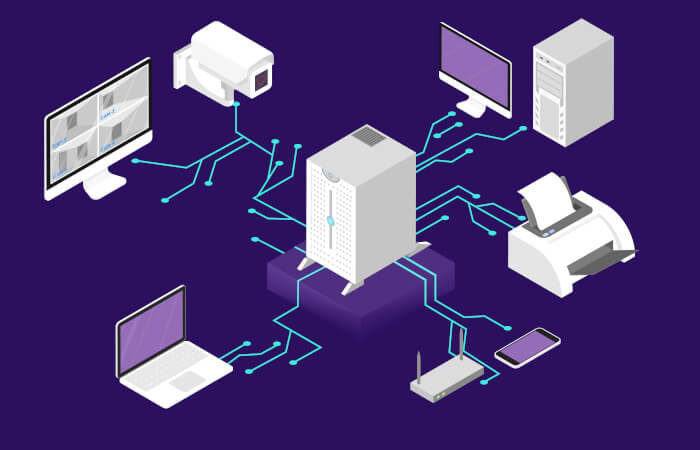XtreemFS is a general purpose storage system and covers most storage needs in a single deployment. XtreemFS is a fault-tolerant distributed file system.
It is open-source, requires no special hardware or kernel modules, and can be mounted on Linux, Windows and OS X.
XtreemFS is a file system for a variety of different use cases and purposes.
XtreemFS can be deployed:
- as a filer replacement (home directories and group shares),
- in HPC cluster,
- in Hadoop clusters,
- for VM block storage
- cross-branch data sharing
- and many more use cases, all in a single system.
Features include:
- Close-to-open consistency model in the event of concurrent file accesses.
- Scales according to your needs within minutes, simply by adding new standard hardware.
- Cross-site file replication with auto-failover. Fault-tolerant replication keeps your data safe and gives you peace of mind.
- Partial replicas, objects fetched on demand.
- POSIX compatibility. Users can mount and access XtreemFS like any other common file system. Application can access XtreemFS via the standard file system interface, i.e. without having to be rebuilt against a specialized API. XtreemFS supports a POSIX-compliant access control model.
- Plugins for authentication policies, replica selection.
- RAID0 (striping) with parallel I/O over stripes. A striped file is split into multiple chunks (“stripes”), which are stored on different storage servers.
- Read-only replication. XtreemFS supports the replication of mutable files as well as a replicated Directory Service (DIR) and Metadata Catalog (MRC). All components in XtreemFS can be replicated for redundancy which results in a fully fault-tolerant file system. The replication in XtreemFS works with hot backups, which automatically take over if the primary replica fails.
- Security (SSL, X.509 certificates). XtreemFS uses unauthenticated and unencrypted TCP connections by default. To encrypt all network traffic, services and clients can establish SSL connections.
- File system driver for Hadoop.
- Servers for Linux and Solaris Natively and Non-Native Windows Java & ANT based server.
- Cross-platform support – there are clients for Linux, Mac OS X, and Windows.
Website: www.xtreemfs.org
Support: User Guide, Mailing List
Developer: Matthias Noack, Robert Schmidtke, Felix Seibert (project is funded by the Zuse Institute Berlin)
License: New BSD
XtreemFS is written in Java. Learn Java with our recommended free books and free tutorials.
| Popular series | |
|---|---|
| The largest compilation of the best free and open source software in the universe. Each article is supplied with a legendary ratings chart helping you to make informed decisions. | |
| Hundreds of in-depth reviews offering our unbiased and expert opinion on software. We offer helpful and impartial information. | |
| The Big List of Active Linux Distros is a large compilation of actively developed Linux distributions. | |
| Replace proprietary software with open source alternatives: Google, Microsoft, Apple, Adobe, IBM, Autodesk, Oracle, Atlassian, Corel, Cisco, Intuit, SAS, Progress, Salesforce, and Citrix | |
| Awesome Free Linux Games Tools showcases a series of tools that making gaming on Linux a more pleasurable experience. This is a new series. | |
| Machine Learning explores practical applications of machine learning and deep learning from a Linux perspective. We've written reviews of more than 40 self-hosted apps. All are free and open source. | |
| New to Linux? Read our Linux for Starters series. We start right at the basics and teach you everything you need to know to get started with Linux. | |
| Alternatives to popular CLI tools showcases essential tools that are modern replacements for core Linux utilities. | |
| Essential Linux system tools focuses on small, indispensable utilities, useful for system administrators as well as regular users. | |
| Linux utilities to maximise your productivity. Small, indispensable tools, useful for anyone running a Linux machine. | |
| Surveys popular streaming services from a Linux perspective: Amazon Music Unlimited, Myuzi, Spotify, Deezer, Tidal. | |
| Saving Money with Linux looks at how you can reduce your energy bills running Linux. | |
| Home computers became commonplace in the 1980s. Emulate home computers including the Commodore 64, Amiga, Atari ST, ZX81, Amstrad CPC, and ZX Spectrum. | |
| Now and Then examines how promising open source software fared over the years. It can be a bumpy ride. | |
| Linux at Home looks at a range of home activities where Linux can play its part, making the most of our time at home, keeping active and engaged. | |
| Linux Candy reveals the lighter side of Linux. Have some fun and escape from the daily drudgery. | |
| Getting Started with Docker helps you master Docker, a set of platform as a service products that delivers software in packages called containers. | |
| Best Free Android Apps. We showcase free Android apps that are definitely worth downloading. There's a strict eligibility criteria for inclusion in this series. | |
| These best free books accelerate your learning of every programming language. Learn a new language today! | |
| These free tutorials offer the perfect tonic to our free programming books series. | |
| Linux Around The World showcases usergroups that are relevant to Linux enthusiasts. Great ways to meet up with fellow enthusiasts. | |
| Stars and Stripes is an occasional series looking at the impact of Linux in the USA. | |
